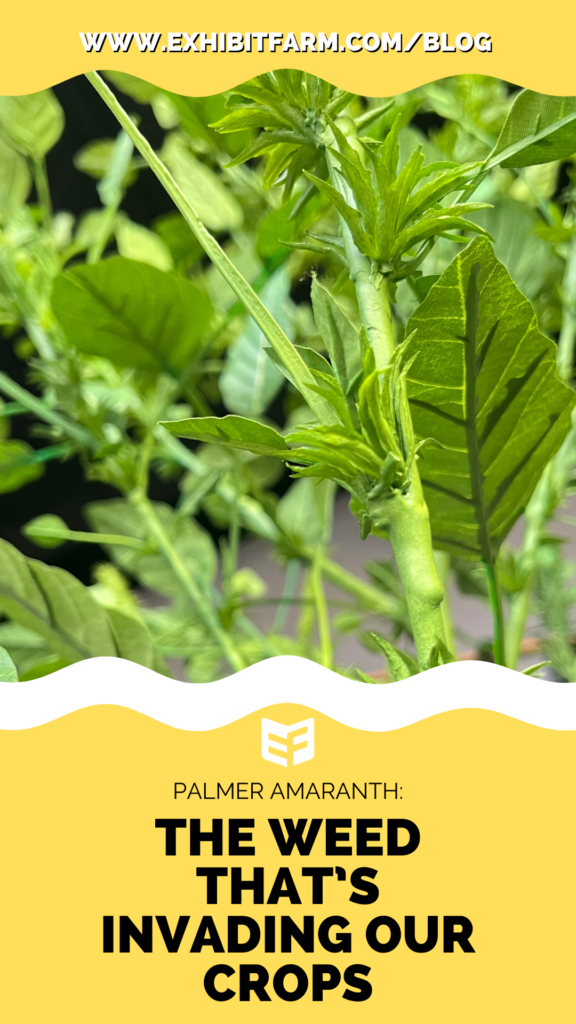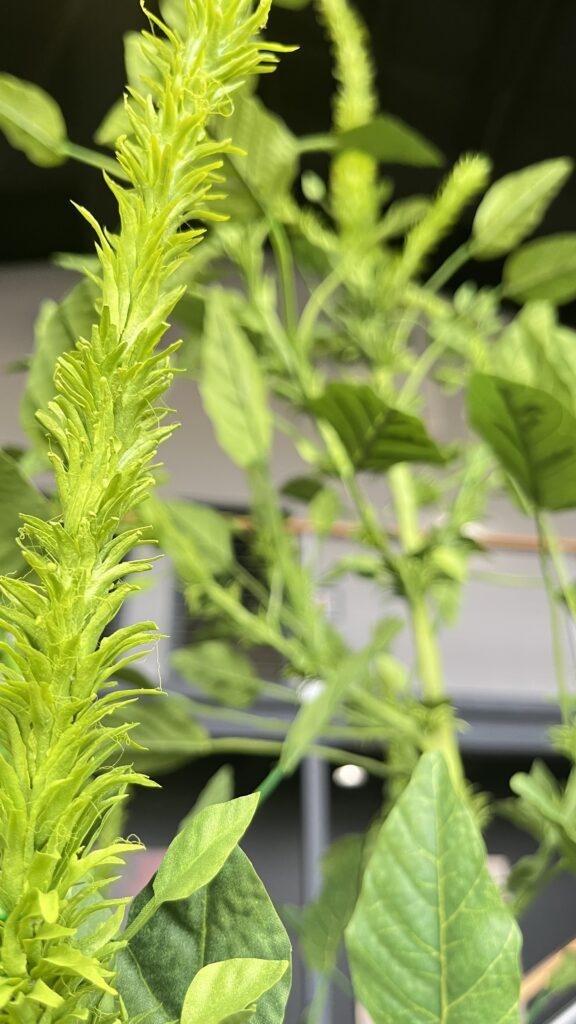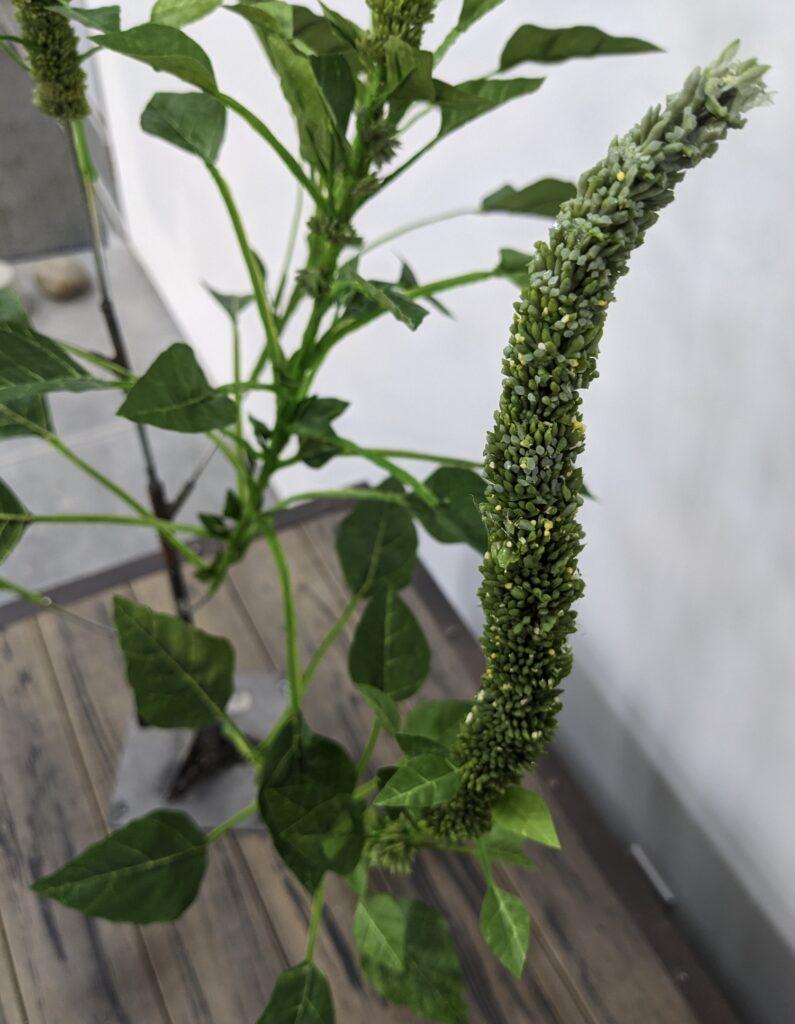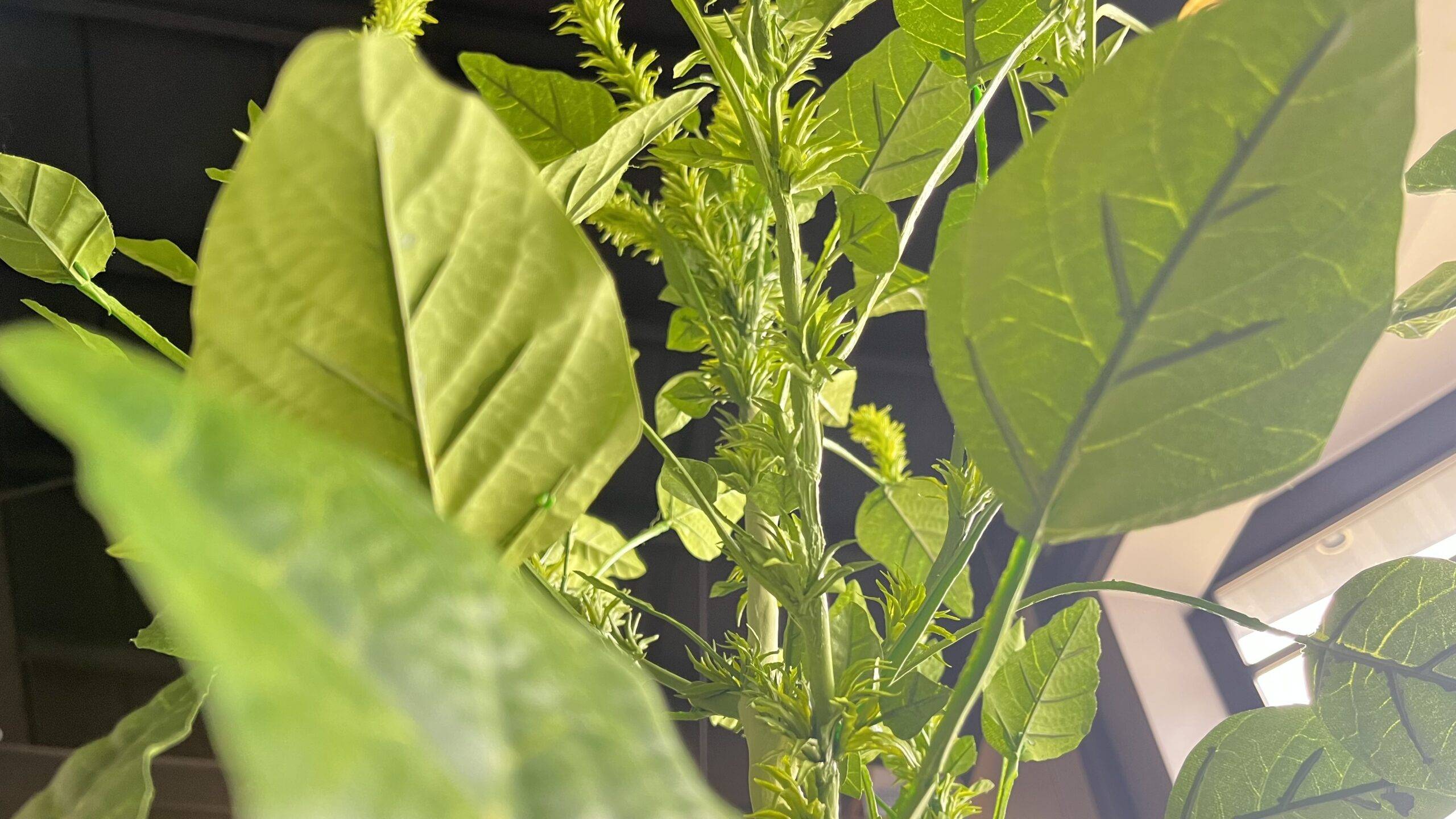
Most of the population knows little to none about the Palmer Amaranth. But most farmers have likely heard of it or are dealing with the unruly task of trying to get rid of them. North Dakota Soybean Association tasked us with creating a model that they could take to trade shows and other events, educating more people on this invasive weed.
They have been one of the coolest plants to create and have been very popular so far. The model has been made in a female and male version. We created ours to be about 7 feet tall, even though some palmer amaranth weeds can grow up to 10 feet tall!
What is a Palmer Amaranth?
Palmer amaranth is a highly invasive weed species that has become a major problem for farmers across the United States. They’re in a group commonly known as “pigweeds”. Originally native to the southwestern United States and northern Mexico, Palmer amaranth has spread rapidly in recent years due to a combination of factors including increased herbicide use, reduced tillage practices, and the movement of contaminated seed and equipment.
Palmer amaranth is a particularly difficult weed to control because it is resistant to multiple herbicides, including glyphosate, which is the active ingredient in the popular herbicide Roundup. This resistance has led to significant yield losses in crops such as cotton and soybeans, as well as increased costs for farmers who must use more expensive and less effective herbicides to control the weed.

In addition to its herbicide resistance, Palmer amaranth is also a prolific seed producer, with a single plant capable of producing up to half a million seeds. These seeds can remain viable in the soil for several years, making it difficult to eradicate the weed once it has become established.
To address the problem of Palmer amaranth, researchers and farmers have developed a variety of management strategies. These include cultural practices such as crop rotation and tillage, as well as the use of targeted herbicides
The King of “Superweeds”
H. Claire Brown wrote an amazing article in The New York Times Magazine called “Attack of the Superweeds”. Brown wrote “Superweeds — that is, weeds that have evolved characteristics that make them more difficult to control as a result of repeatedly using the same management tactic — are rapidly overtaking American commodity farms, and Palmer amaranth is their king. Scientists have identified a population of Palmer amaranth that can tolerate being sprayed with six different herbicides (though not all at once), and they continue to discover new resistances.”
Brown continued, “By now, it’s clear that weeds are evolving faster than companies are developing new weed killers: Just six years ago, in response to the onset of resistance to its marquee product, Roundup (active ingredient: glyphosate), Monsanto began selling a new generation of genetically modified seeds bred to resist both glyphosate and dicamba. By 2020, scientists had confirmed the existence of dicamba-resistant Palmer amaranth. The agribusiness giant took a decade to develop that product line. The weeds caught up in five years.”
Check out the rest of the article, Attack of the Superweeds


Process and Purpose
Are these models 3D printed? Actually, each of these models are handmade by our scenic team to be as lifelike as possible. Because each of them are handmade, that means every model will be unique. We have also made them durable for travel by connecting the models to a steel base.
Our client, North Dakota Soybean Association bought these models in partnership with North Dakota State University to use at trade shows for industry and agricultural education, as well as in classroom settings.
Check out our products Male Palmer Amaranth Female Palmer Amaranth
